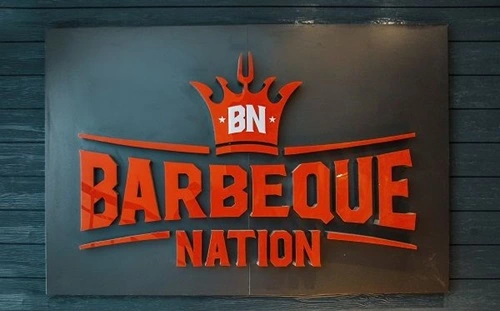Barbeque Nation, a popular chain of casual dining restaurants in India, operates with a unique business model that combines an all-you-can-eat buffet with interactive dining experiences. This model has helped the company sustain profitability while continuing to expand across the country.

1. All-You-Can-Eat Buffet
Barbeque Nation’s primary offering is its fixed-price buffet, where customers can eat unlimited servings from a wide variety of dishes. The pricing typically ranges between ₹650 to ₹800 per head, depending on location and meal timing. Customers can enjoy live barbeque grills at their tables, with a selection of vegetarian and non-vegetarian starters that they can grill and season themselves, providing a fun and interactive dining experience. This setup, combined with its extensive main course and dessert options, creates an attractive value proposition.
2. High Table Turnover
Even though the buffet is unlimited, Barbeque Nation ensures profitability by limiting the time customers spend at the restaurant. This concept allows the restaurant to serve multiple customers per table during peak meal times. By carefully managing table turnover, the company maximizes its seating capacity and generates more revenue per meal period.
3. Expanding to Tier 2 and Tier 3 Cities
Barbeque Nation is actively expanding into tier 2 and tier 3 cities, targeting regions where disposable incomes are rising, and dining out is becoming more common. By adopting smaller restaurant sizes in these areas, the company reduces capital expenditure (CapEx), making it more cost-efficient to operate in these regions. This expansion strategy helps Barbeque Nation tap into new customer bases while maintaining profitability.
4. Dine-In and Delivery
While the dine-in experience has always been at the heart of its business model, Barbeque Nation has adapted to changing consumer behavior by launching its UBQ (Urban Barbeque) brand for online deliveries. This segment caters to the growing demand for home dining, offering items from its traditional menu and a la carte options. The introduction of delivery services has allowed the brand to maintain revenue streams, especially during challenging periods like the pandemic.
5. Marketing and Promotions
Barbeque Nation invests heavily in marketing and promotions, utilizing both offline and online strategies to attract customers. They run frequent food festivals, limited-time promotions, and social media campaigns to engage their customer base. For instance, the brand has successfully used campaigns like “Jatt Set Go” and “Makkhan Singh” to increase visibility and attract more diners.
6. Managing Costs
To maintain profitability, Barbeque Nation focuses on efficient inventory management and cost control. The buffet model ensures that food is prepared in large quantities, which helps reduce per-unit costs. Additionally, the company uses technology to streamline operations, from tracking inventory to managing reservations and guest feedback.
7. Diverse Revenue Streams
Apart from its core buffet dining model, Barbeque Nation generates revenue through value-added services such as events and catering. It has also diversified by offering gift cards and loyalty programs, which help in customer retention and boost repeat business.
8. Strong Financial Performance
In recent financial reports, Barbeque Nation showed strong growth, especially as dine-in business rebounded post-pandemic. For example, in Q2 FY23, the company’s profit increased by 143% year-on-year, reaching ₹7.09 crore. This growth was driven by increased footfall, along with contributions from its international operations.
Conclusion
Barbeque Nation’s business model focuses on delivering value through an all-you-can-eat buffet, high table turnover, and an interactive dining experience. By expanding into new markets, leveraging delivery services, and maintaining cost-efficiency, the company continues to grow while maintaining profitability in the highly competitive Indian restaurant industry